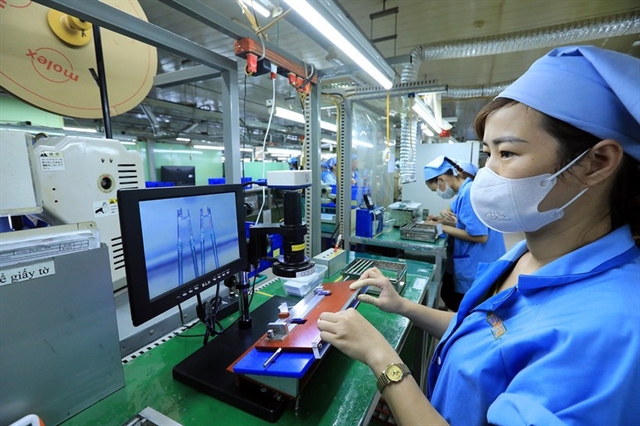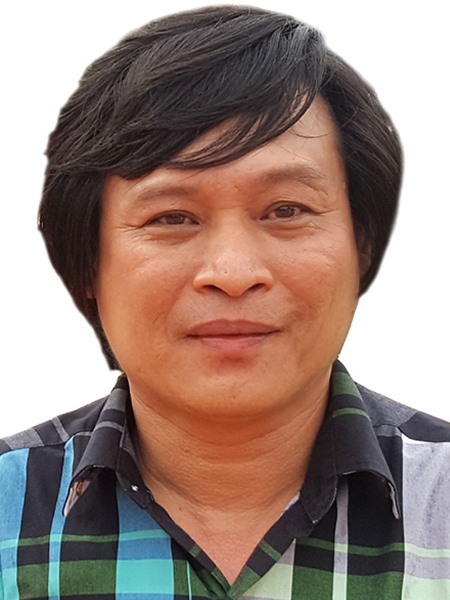 World
World

Much has been said about the National League for Democracy (NLD)-led elected government’s stance on peace and security in recent weeks, with attention being drawn to the conflicts in the North Rakhine State and the actions of Myanmar’s de facto leader, Daw Aung San Suu Kyi.
 |
Min Lwin
Much has been said about the National League for Democracy (NLD)-led elected government’s stance on peace and security in recent weeks, with attention being drawn to the conflicts in the North Rakhine State and the actions of Myanmar’s de facto leader, Daw Aung San Suu Kyi.
Within the country there is concern, however, on the state of the economy.
Recently, Professor Sean Turnell of Macquarie University of Australia, the Special Economic Consultant to the State Counsellor of Myanmar, came out to paint a positive picture of the Myanmar economy at his briefing “Myanmar’s Economy 2017: Taming Dragons, Finding Tigers”.
He said the NLD government has saved the economy from bankruptcy, after the so-called “sugar-rush” spending during the final years of the previous U Thein Sein administration.
The previous government was wasteful as it pushed the budget deficit to 4.5 per cent of GDP in 2015-16, which was funded through the printing of money.
Prof Turnell said the NLD government had reduced the budget deficit to 2.5 per cent of GDP in 2016-17. He forecast optimistically that Myanmar’s GDP growth would be 6.9 per cent this year, putting it among the world’s top five fastest growing nations.
Echoing his remarks, Myanmar’s National Planning and Finance Minister U Kyaw Win likened “Myanmar to an aircraft on a runway in 2016, but ready to take off in 2017” at a forum with local and foreign business persons. He affirmed “Our mission is also trying to fix things… to boost the economy,” he asserted.
However, World Bank’s Myanmar Economic Monitor estimates that Myanmar’s economy slowed down in 2016-2017, with growth expected to moderate to 6.5 per cent from 7.3 per cent in the previous year.
On the streets, ordinary people have been complaining of higher daily food prices and businesses have few positive things to say about the government’s economic measures.
De facto leader Suu Kyi is seen paying attention to peace as priority, but her supporters say the economy is coming into focus!
The NLD-led government in fact has been slow to set up a new Investment Commission.
It took six months after it came into office to announce various economic measures, which were subject to visible delays.
When Myanmar’s 12-point economic policy came out on July 29, 2016 - four months after the new administration was formed – there were questions on implementation.
The policy outlines were rather vague. They were portrayed as a people-centered policy, with broad grassroot participation.
It raised hopes on actions towards national reconciliation, protection of natural resources and setting up of an economic framework in order that the resources can be allocated equally and fairly among states and regions.
At first glance, the NLD government’s policy appeared as a possible reversion of the previous government’s policies. It suspended many government projects and subjected many to reviews. There were delays to payments and some construction works were suspended.
Additionally, Yangon Chief Minister ordered the suspension and review of high-rise construction in his domain, the business capital of Myanmar, which further weakened local construction activities.
Many people in business community have criticised the government for its lack of serious attention to economic policy as priority and novice approach to getting things done.
Many in town said “life is as tough as ever”, including once “privileged cronies”, as business opportunities dried up and the state pursued higher tax collection.
A year after government formation, ministers said they were serious about economic reforms; would pursue macroeconomic stability, encourage small and medium enterprises (SMEs) development and ensure more credit to private sector at micro level.
Prof Turnell said, at a recent economic forum, the Myanmar government had introduced a number of important financial sector reforms in recent months and stricter capital requirements and liquidity ratios for private banks.
In April this year, the government enacted regulations for a new investment law - introducing a new regime of incentives based on geography and sector - and in July, it submitted a draft company law to Parliament.
In September 2016, the US surprised many with the decision to lift all of its remaining economic sanctions on Myanmar. One hundred and eleven individuals and companies were taken off the blacklist.
The US also reinstated Myanmar’s trade GSP (Generalised System of Preferences) scheme. The status grants Myanmar tax privileges on exports to the world’s largest economy and in turn brings in foreign investment into the industrial sector.
But, those economic opportunities seem in vain as Myanmar is far from ready to export its products or services.
Moreover, some critics say the NLD government has neither a broad economic vision nor the ability to create harmonious economic condition to attract local and foreign investors.
The government reported that Foreign Direct Investment (FDI) grew in 2017-18, with more than US$3 billion worth of investment approved by the Myanmar Investment Commission in the first four months of the fiscal year, which is well ahead of the government’s US$ six billion target.
However, one must distinguish between FDIs on paper and actual inflows.
Frequently they may differ. According to media reports, agriculture, mining, oil and gas, and construction received no investment, but a few million USD came in transport and communication, manufacturing, power generation, and hotels and tourism sectors.
There are necessary conditions for Myanmar’s economy to grow and the government must acknowledge that “business confidence” is most important to increase investments and domestic consumption spending.
The government needs to cut bureaucracy, red tape, increase investment in infrastructure (especially in transport, logistics, and providing electricity) and support SMEs in securing land, finance and accessing new technology, in the short term.
Education must be reformed for long-term productivity enhancement.
The Myanmar Economic policy outlined objectives to nurture human resources, to give high priority to develop infrastructure such as electricity, roads and ports, and to set up a “Data ID Card System”, “Digital Government Strategy” and “e-Government System”, to create job opportunities for all Myanmar citizens who live in Myanmar and who arrived back from foreign countries to Myanmar.
Yet, its performances against these objectives are far from realisation, and unfortunately, recent racial tension and conflict in Northern Rakhine State as well as international pressure on human rights is shifting further attention to security, rather than economy.—Eleven Media Group/ANN
* Min Lwin is the Editor-in-charge, Eleven Media Group, Myanmar